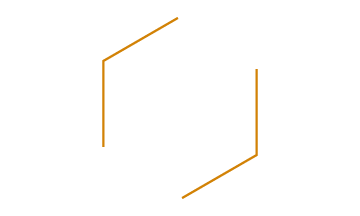Author Affiliation
Haskins, Center on Children and Families, Brookings Institution, Washington, DC. Corresponding author’s e-mail: [email protected]
References
1. Puma, M., Bell, S., Cook, R., Heid, C., Broene, P., Jenkins, F., Downer, J. (2012). Third grade follow-up to the Head Start Impact Study: Final report (OPRE Report 2012-45). Washington, DC: U.S. Department of Health and Human Services, Administration for Children and Families, Office of Planning, Research and Evaluation.
2. Gormley, W. T., Jr., Gayer, T., Phillips, D., & Dawson, B. (2005). The effects of universal pre-K on cognitive development. Developmental Psychology, 41, 872–884.
3. Jencks, C., & Phillips, M. (Eds.). (1998). The Black-White test score gap. Washington, DC: Brookings Institution Press.
4. Lee, V. E., & Burkam, D. T. (2002). Inequality at the starting gate. Washington, DC: Economic Policy Institute.
5. Shonkoff, J. P., & Phillips, D. A. (Eds.). (2000). From neurons to neighborhoods: The science of early childhood development. Washington, DC: National Academies Press.
6. Schweinhart, L. J., Barnett, W. S., & Belfield, C. R. (2005). Lifetime effects: The High/Scope Perry Preschool Study through age 40. Ypsilanti, MI: High/Scope Press.
7. Ramey, C. T., Sparling, J. J., & Ramey, S. L. (2012). Abecedarian: The ideas, the approach, and the findings. Los Altos, CA: Sociometrics.
8. Zigler, E., & Muenchow, S. (1992). Head Start: The inside story of America’s most successful educational experiment. New York, NY: Basic Books.
9. Vinovskis, M. S. (2005). The birth of Head Start: Preschool education policies in the Kennedy and Johnson administrations. Chicago, IL: University of Chicago Press.
10. Steiner, G. Y. (with Milius, P. H.). (1976). The children’s cause. Washington, DC: Brookings Institution.
11. Barnett, W. S., Friedman-Krauss, A. H., Gomez, R., Horowitz, M., Weisenfeld, G. G., Brown, K. C., & Squires, J. H. (2016). The state of preschool 2015: State preschool yearbook. New Brunswick, NJ: National Institute for Early Education Research.
12. Mitchell, A. (2001). Kindergarten programs in the states: Trends and issues. Washington, DC: Institute of Education Sciences, Education Research Information Center.
13. Weiland, C., & Yoshikawa, H. (2013). Impacts of a pre-kindergarten program on children’s mathematics, language, literacy, executive function, and emotional skills. Child Development, 84, 2112–2130.
14. Porter, K. E., Reardon, S. F., Unlu, F., Bloom, H. S., & Robinson-Cimpian, J. P. (2014, November). Estimating causal effects of education interventions using a two-rating regression discontinuity design: Lessons from a simulation study [Working paper]. Available from http://www.mdrc.org/publication/estimating-causal-effects-education-interventions-using-two-rating-regression
15. Moiduddin, E., Aikens, N., Tarullo, L., West, J., & Xue, Y. (2012). Child outcomes and classroom quality in FACES 2009. Washington, DC: U.S. Department of Health and Human Services.
16. Burchinal, M., Kainz, K., & Cai, Y. (2011). How well do our measures of quality predict child outcomes? A meta-analysis and coordinated analysis of data from large-scale studies of early childhood settings. In M. Zaslow, I. Martinez-Beck, K. Tout, & T. Halle (Eds.), Quality measurement in early childhood settings (pp. 11–31). Baltimore, MD: Brookes.
17. Kalil, A., Ryan, R., & Corey, M. (2012). Diverging destinies: Maternal education and the developmental gradient in time with children. Demography, 49, 1361–1383.
18. Wasik, B. H. (1993, Winter). Staffing issues for home visiting programs. The Future of Children, 3(3), 140–157.
19. Haskins, R., & Margolis, G. (2015). Show me the evidence: Obama’s fight for rigor and results in social policy. Washington, DC: Brookings Institution Press.
20. U.S. Department of Health and Human Services. (n.d.). The maternal, infant, and early childhood home visiting programs: Partnering with parents to help children succeed [Issue brief]. Retrieved from https://www.acf.hhs.gov/sites/default/files/ecd/home_visiting_issue_brief_2015.pdf
21. Reynolds, A. J. (2000). Success in early intervention: The Chicago Child-Parent Centers. Lincoln: University of Nebraska Press.
22. Olds, D., Eckenrode, J., Henderson, C., Jr., Kitzman, H., Powers, J., Cole, R., Luckey, D. (1997). Long-term effects of home visitation on maternal life course and child abuse and neglect: 15-year follow-up of a randomized trial. Journal of the American Medical Association, 278, 637–643.
23. U.S. Department of Health and Human Services. (n.d.) Home visiting evidence of effectiveness. Retrieved from http://homvee.acf.hhs.gov/models.aspx
24. Chien, N. (2015, November). Estimates of child care eligibility and receipt for fiscal year 2012. ASPE Issue Brief. Washington, DC: U.S. Department of Health and Human Services, Office of the Assistant Secretary for Planning and Evaluation, Office of Human Services Policy.
25. Tully, S. (2015, October 20). Poll: Voters increasingly support early education investments. Edsource Today. Retrieved from https://edsource.org/2015/poll-voters-increasingly-support-early-education-investments/89281
